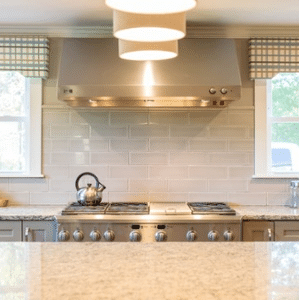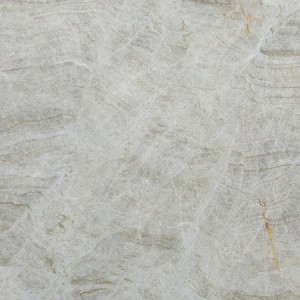Is Taj Mahal Quartzite or Granite?

However, when you’re looking for distinctive beauty, why not capture the splendor of the famed Taj Mahal? This iconic mausoleum in the city of Agra, in India, was built in the 17th century by the emperor Shah Jahan to house the tomb of his beloved wife, as well as his own tomb. It’s generally considered among the most impressive examples of architectural mastery in the world.
Part of the unique beauty of the Taj Mahal lies in the glowing, white stone used for the mausoleum. While the building is rendered in white marble, the Taj Mahal variety of natural stone is not marble, as evidenced by properties (hardness and resilience, for example) not attributed to marble. So, what type of stone is Taj Mahal? Is it granite or quartzite? Here’s what you need to know.
Taj Mahal Stone Properties
Although Taj Mahal stone gets its name from the famous mausoleum, likely due to the light coloration, it is not, in fact, the white marble used on the building of the same name. With it’s soft, white or beige background tones and golden and amber striations, this stone is actually far warmer than the bright white of the Taj Mahal in India, which makes it a suitable interior design choice for many homeowners and professionals.

Taj Mahal Quartzite
Quarried in Brazil, this stone is sometimes referred to as granite, but it is actually quartzite. Here is the difference between the two natural stones.
Granite vs. Quartzite Stone
Foremost, granite and quartzite are formed differently. Quartzite is a metamorphic rock. This means that it started out as one type of rock, in this case sandstone, but transformed into something else due to intense heat, pressure, or other factors. Granite, on the other hand, is an igneous rock formed from the crystallization of molten rock.
While both types of stone are extremely hard, quartzite is actually slightly harder. On the Moh’s hardness scale, which measures the hardness and therefore durability of natural stone, granite measures about 6-6.5, while quartzite comes in around 7 (out of 10). This makes for an extremely durable surface, one that is resistant to heat, UV fading, and stains. While it is not completely immune to damage, and it can be susceptible to scratches and etching if not properly sealed and maintained, it is incredibly resilient, overall.
Taj Mahal Stone
What sets quartzite apart is its unique appearance. Certain varieties of quartzite are sometimes mistaken for marble or granite. Quartzite may have features that are unique to the stone, such as veining that ranges from feathery strokes to dramatic streaking within a single piece, as well as the inclusion of quartz crystals that make for a glittering, dimensional surface.
Taj Mahal quartzite, in particular, is ideal for anyone seeking the perfect middle ground between marble and granite. This stone has the pale, slightly transparent appearance common to marble, paired with the depth and drama often attributed granite. Taj Mahal quartzite makes for a wonderfully warm, inviting, and visually stunning home interior, whether you use it for your kitchen countertops or your entire bathroom.
Using Taj Mahal in Your Home
Taj Mahal quartzite is light in color and features warm tones that evoke a certain coziness in your décor. This isn’t to say it won’t work well in largely white kitchen spaces. In fact, it can be used to create a variety of different aesthetics.
For example, consider this traditional kitchen, rendered largely in white. With white flooring and cabinets, pale gray accents, and stainless steel, you might think the warmth of Taj Mahal quartzite would be out of place. However, keep in mind that the base color is white, and the surrounding surfaces pick up grayish tones in the stone to create a cohesive appearance. There are hints of warmer beige, but they recede amid the cooler colors.
On the other hand, you can also play up the warmer tones in this beautiful stone variety, as in this traditional kitchen. The cabinets are also white, but with natural, light wood flooring and a beige tile backsplash, it’s much easier to see the golden tones in the quartzite.
Taj Mahal also pairs beautifully with darker tones. This transitional New York kitchen features quartzite with waves of white and beige streaking atop an island in dark walnut. This creates a striking contrast that nonetheless exudes incredible warmth, especially with the filtered lighting from the smoky glass pendants above.
This quartzite can even skew modern when paired with gray cabinets, as in this transitional family kitchen, where the stone takes on a whiter cast. It may not be the same stone used in the iconic building of the same name, but in many ways, Taj Mahal quartzite could be considered a work of art in its own right.
Finding the right countertop for your project
With endless options in countertop surface selections, we invite you to come by and view our inventory and discuss which options are best for your project. Click here to schedule a consultation or stop by our Bethel, CT or Rye, NY locations.





